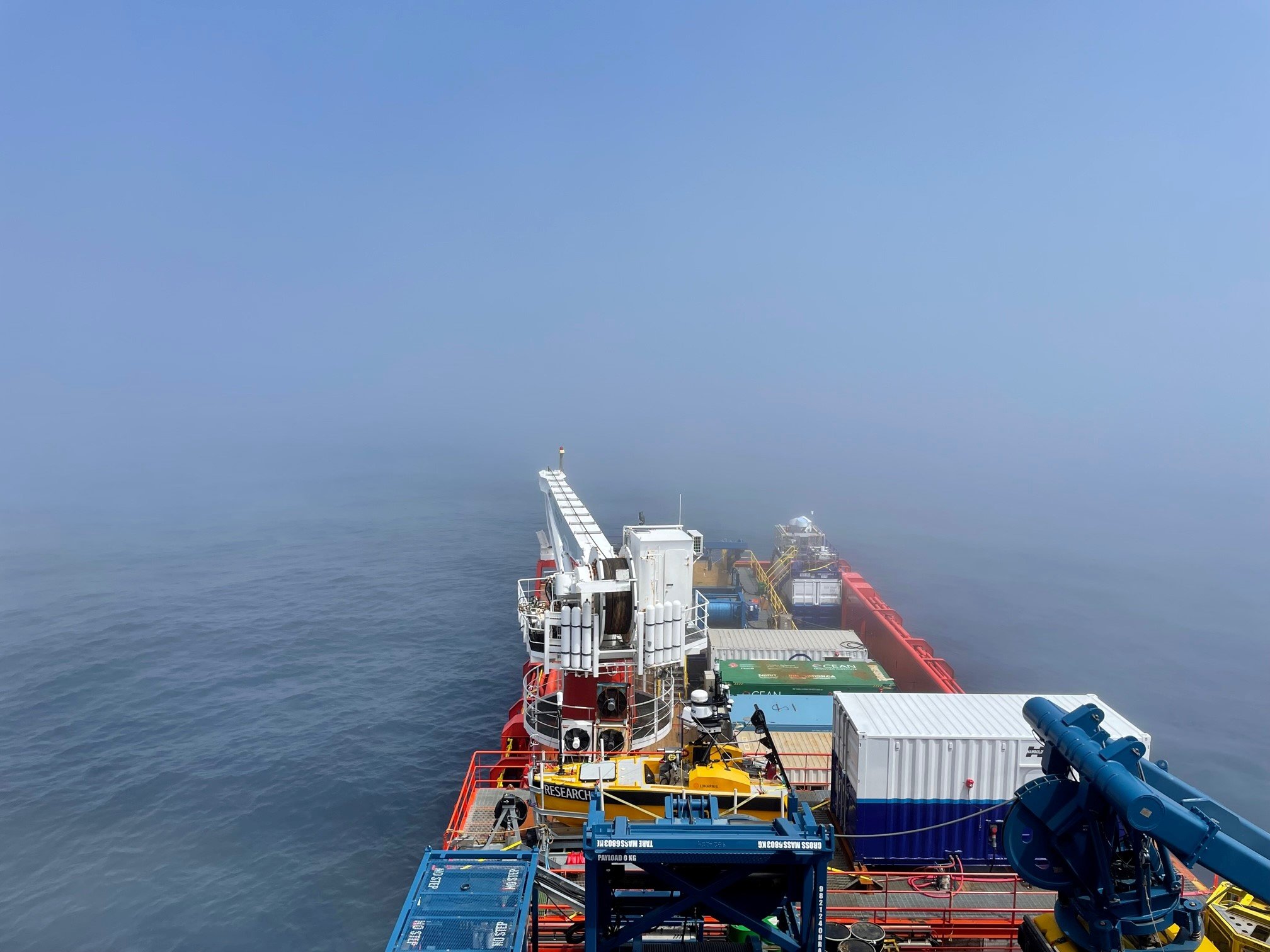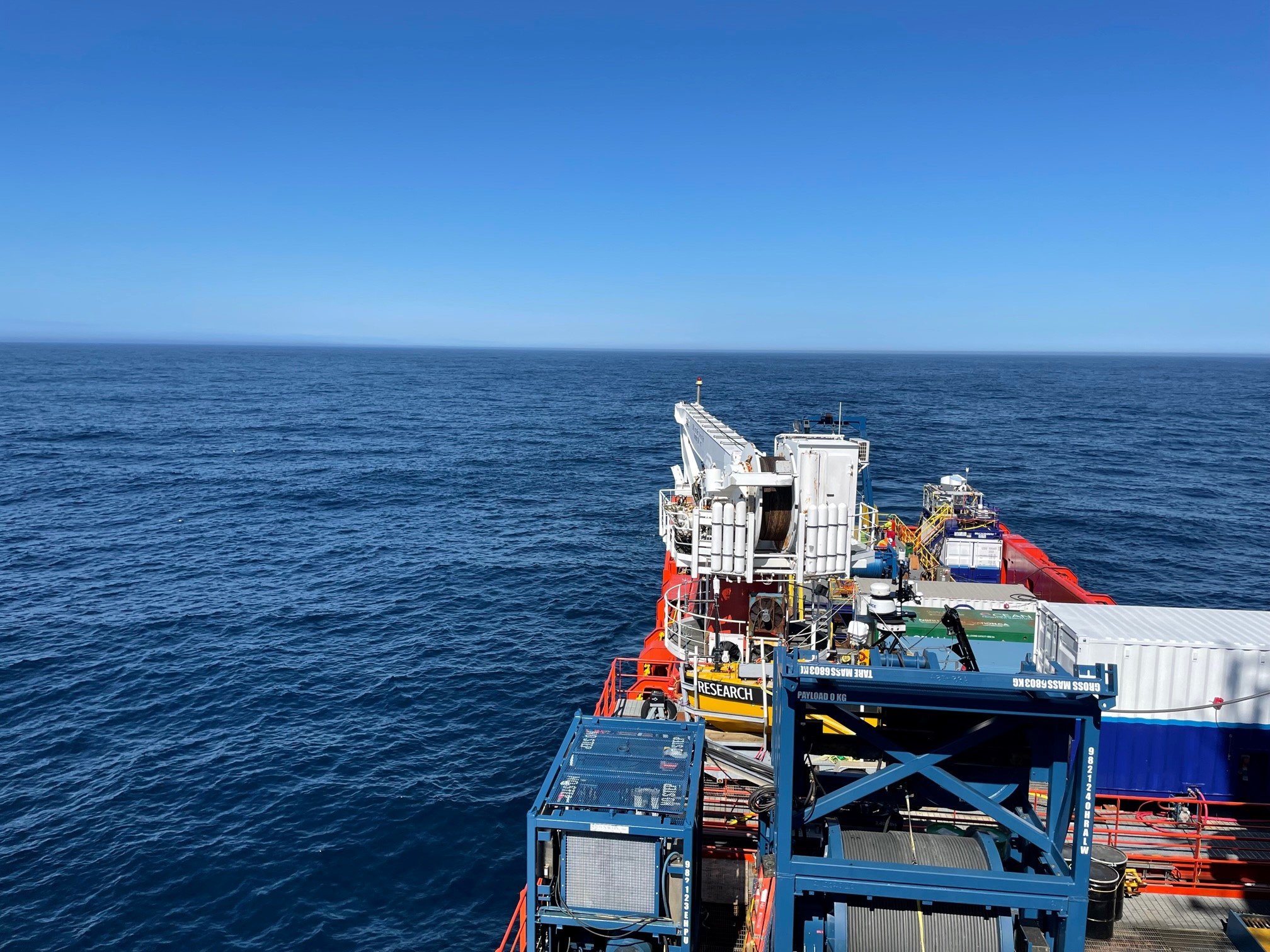During the summer of 2022 I was fortunate to be able to participate on a research cruise in the North Atlantic, along with Leyla Salehpoor and Trevor VandenBoer. The cruise was a part of the FATIMA, a multi-million-dollar project funded by the US Office of Naval Research, whose aim is better understand the mechanisms of marine fog formation to enable better prediction. This research cruise was the first field campaign of the project and was focused on the Sable Island and Grand Banks regions off the coast of Nova Scotia and Newfoundland, respectively; one of the foggiest places in the world. There were a number of institutions and universities that participated in the cruise, including Notre Dame, the US Naval Postgraduate School, Scripps Oceanographic Institute, NOAA, and Dalhousie.
An earlier blog post by Leyla mentioned our preparation trip to Halifax, where we were based for ship mobilization. The vessel was the Atlantic Condor, which is normally a supply ship but was transformed into a research vessel during an intense set up and mobilization period prior to departure. During mobilization several sea container labs, sampling platforms, and a vast suite of instrumentation were installed on the ship in a seaworthy manner. It was one of the more complex set ups I have been involved in, taking over a week. During set up, Leyla, Trevor and I installed the gas and particle instrumentation that was our contribution to the project. We installed a suite of gas analyzers for NOx, O3, CO and a custom-built instrument. This last platform was for measuring the gaseous total reactive nitrogen budget and could focus in on basic species like NH3. We also deployed 2 MOUDI samplers for size-fractionated aerosol composition samples. Our ion chromatograph was installed in the on-board chemistry lab, to allow for rapid chemical analysis of the MOUDI samples. Leyla was particularly pleased with the spacious chemical lab we had access to. We also worked closely with collaborators from Prof. Rachel Chang’s group (Dalhousie), who installed instrumentation for measuring aerosol particle size distribution. In addition, there was vast array of instruments for aerosol physical, meteorological and oceanographic instrumentation deployed on the ship from the other research teams.
Once set up was complete, we left Halifax for a roughly 2 week cruise that passed Sable Island and made our way up towards the Hibernia oil rigs. After 2 weeks, the ship docked at St Johns, NL for supplies and at this point I left the cruise, to be replaced by Trevor. While at sea, Leyla and I were responsible for gas measurements (quality checks) and collecting the MOUDI samples. Field work on a ship was different to my previous experiences on land. The first challenge was to get used to motion of the sea when working, which took a few days. Another unique challenge was strapping down all instruments to ensure they didn’t move in rough seas. We were fortunate to encounter foggy conditions on multiple occasions, and our main challenge was to ensure our samplers were working in fog, so that we didn’t miss any important samples or data. Working closely with the team from Dalhousie, we were able to capture a number of fog events successfully, building a nice dataset that we look forward to working through.
Overall, I enjoyed my time at sea as part of this project. A highlight for me was meeting all the members of the science crew on the ship and learning from them about different research areas and meteorological and oceanographic instruments/techniques. In particular, I was taught to launch weather balloons. I also really enjoyed the constant ocean view.
Leigh






